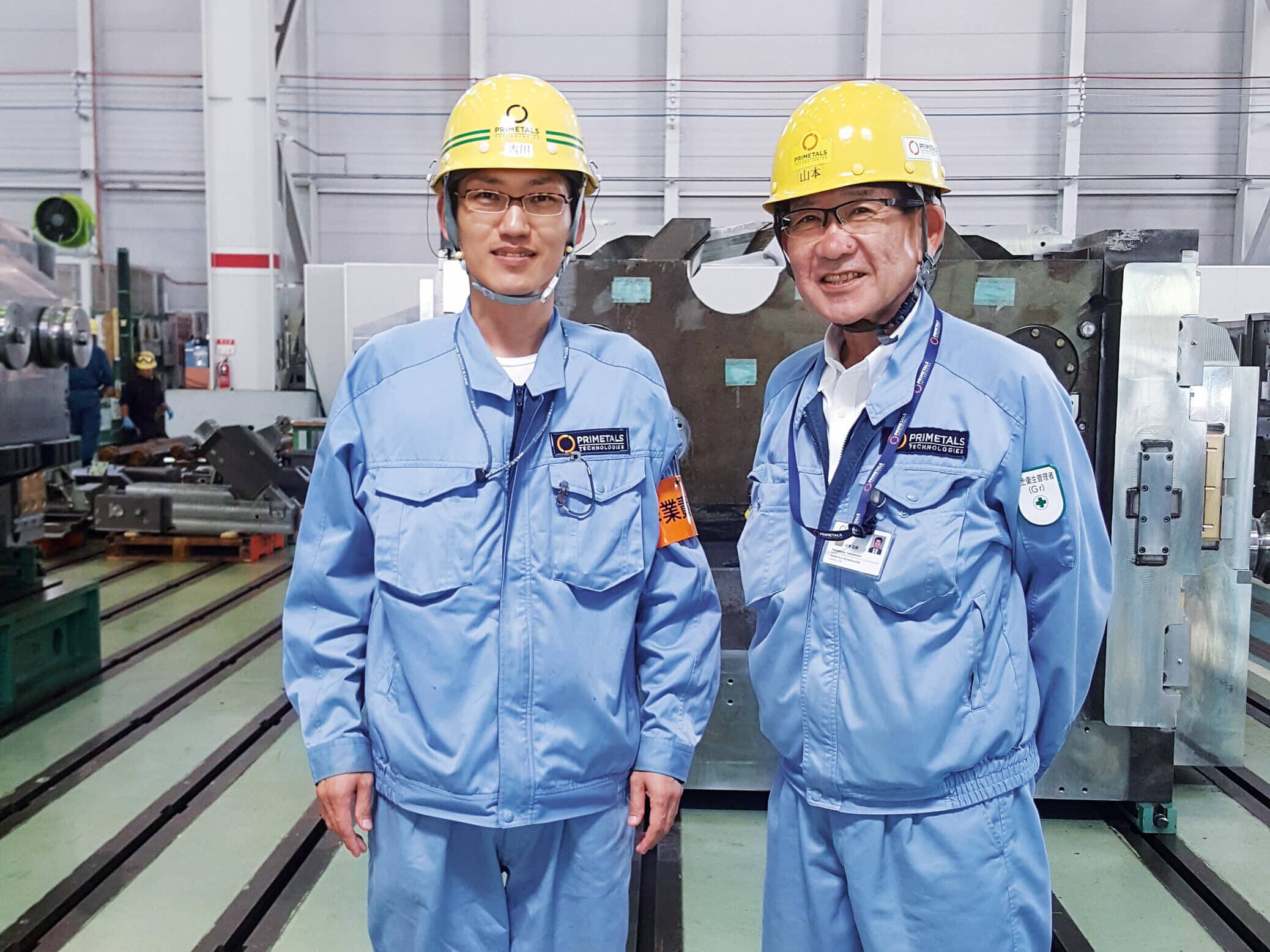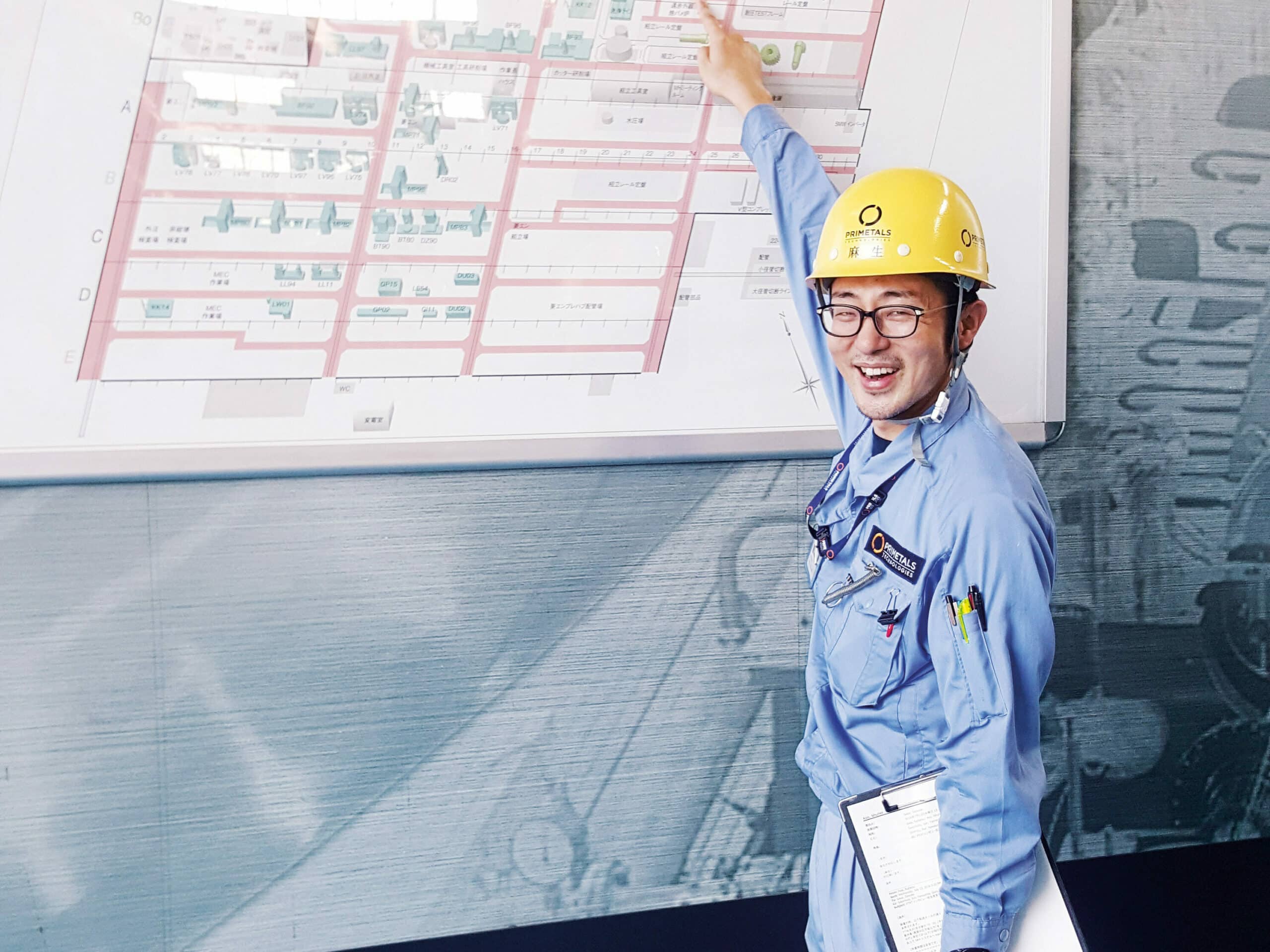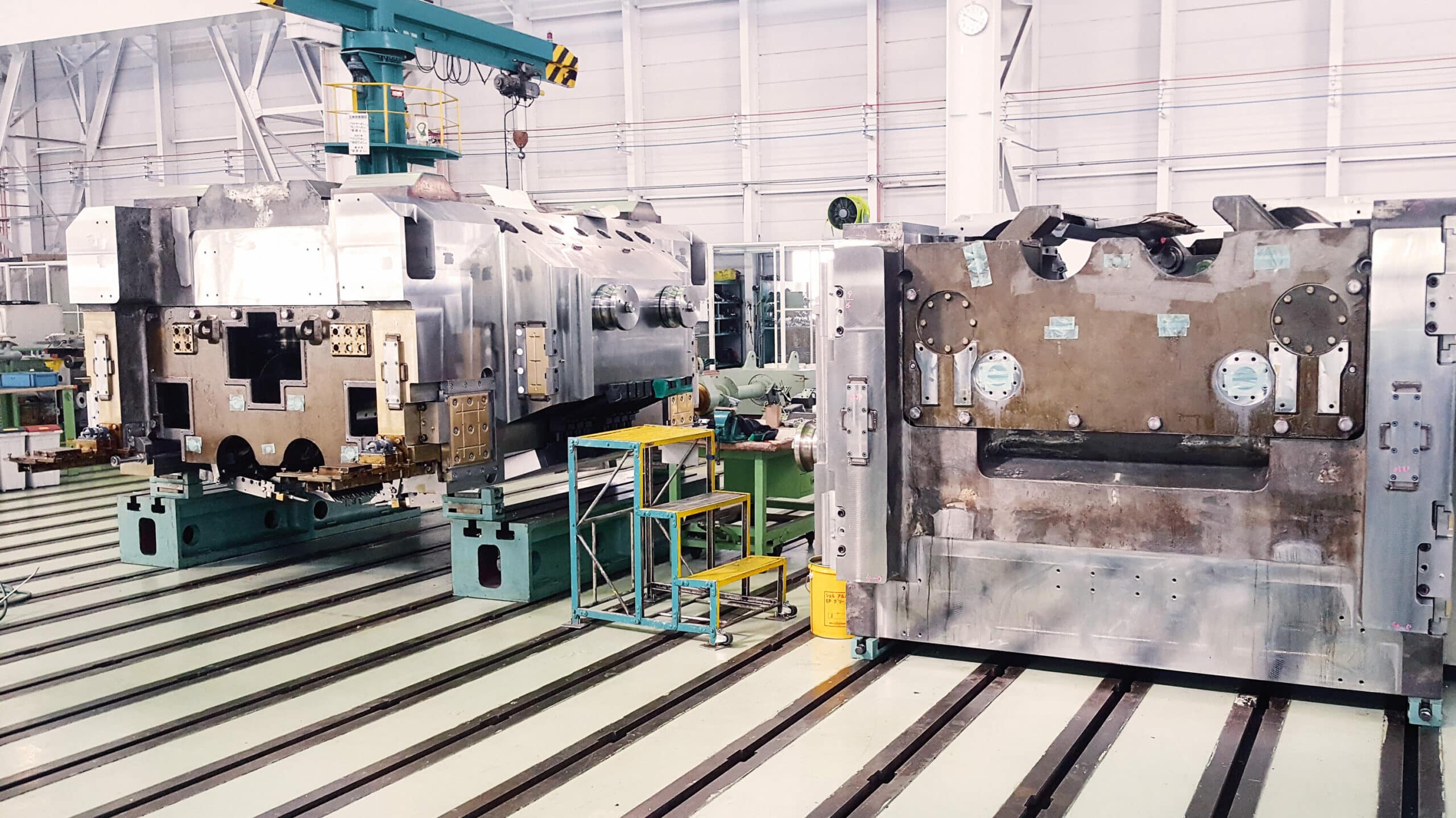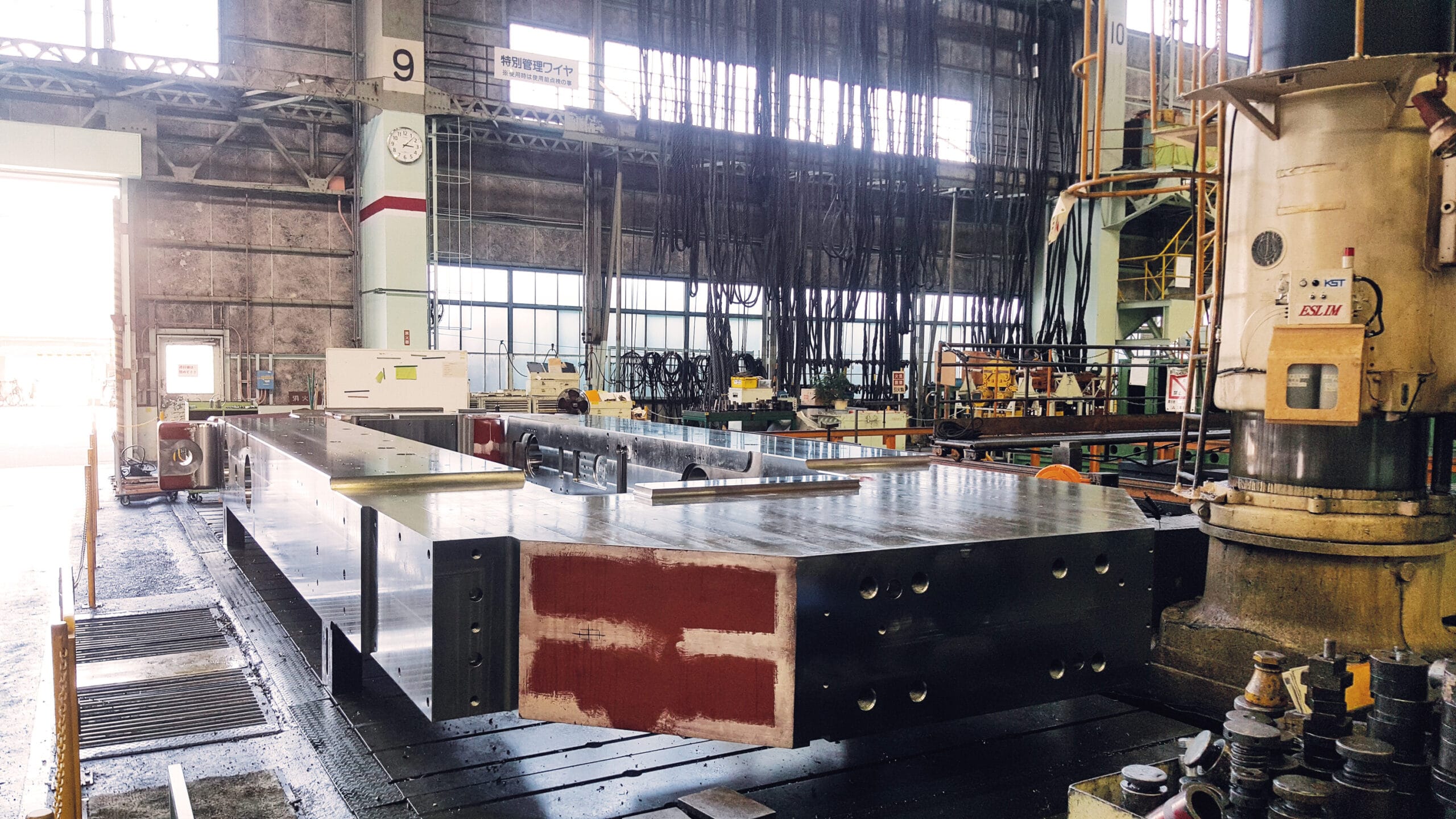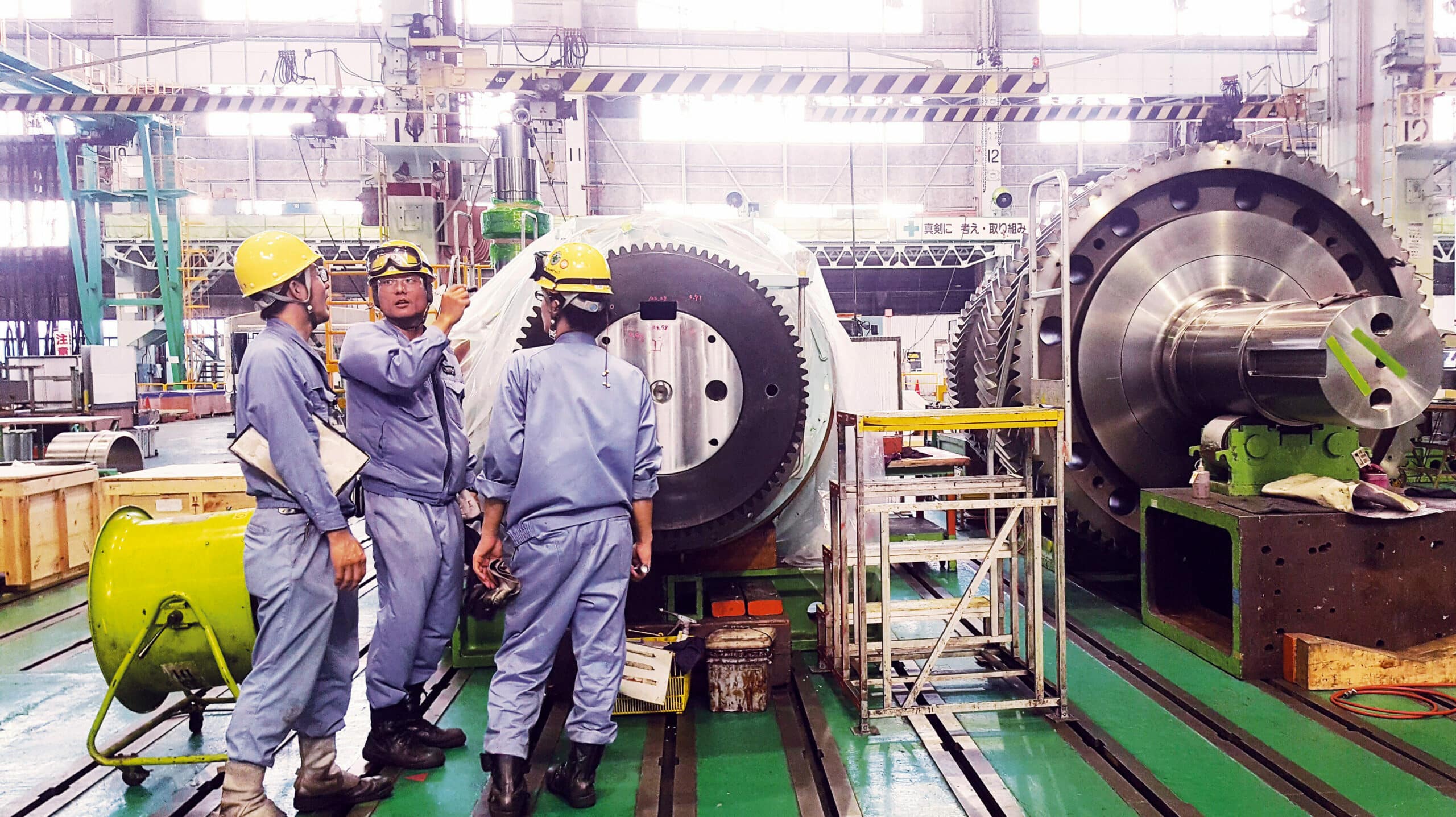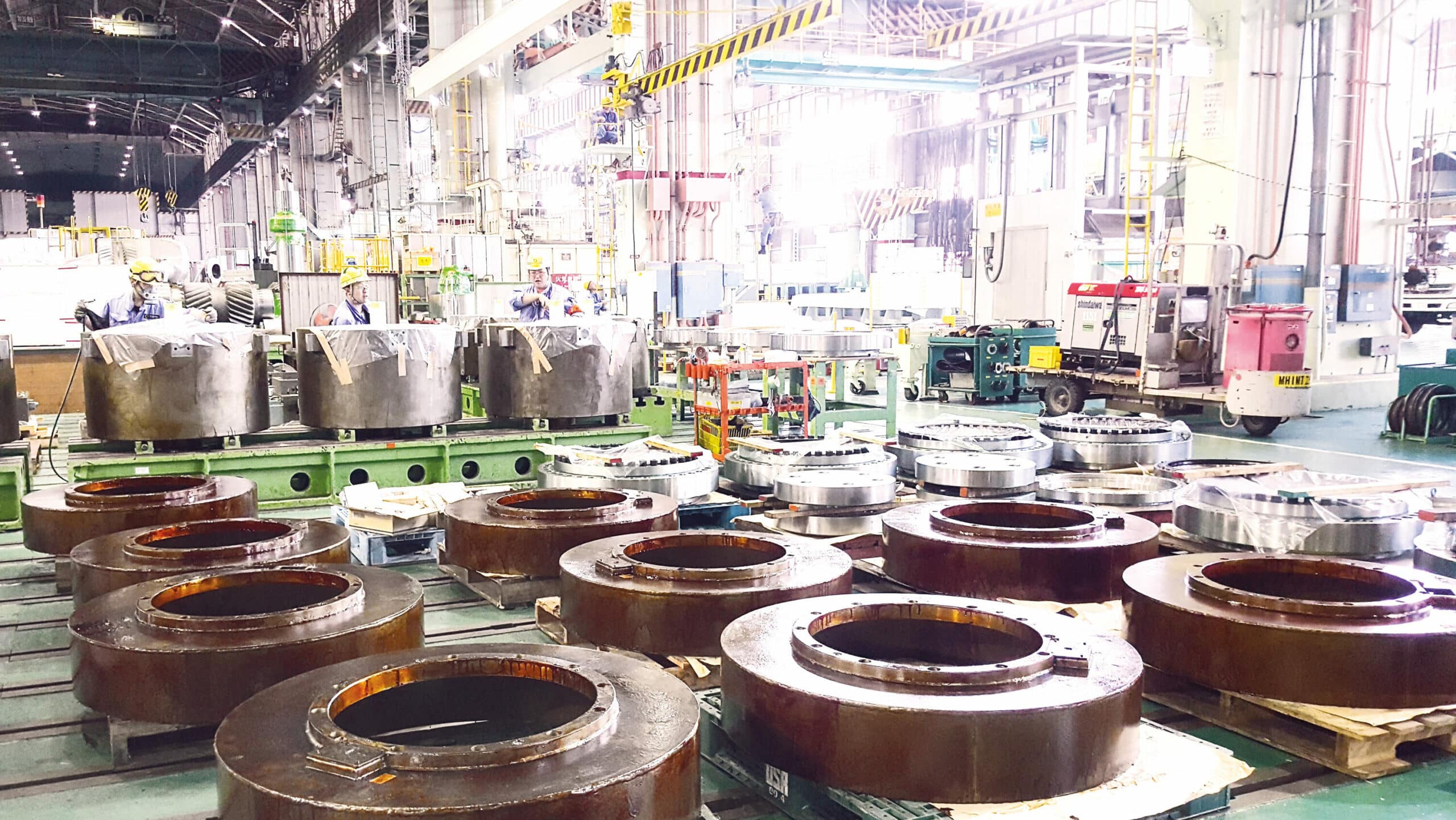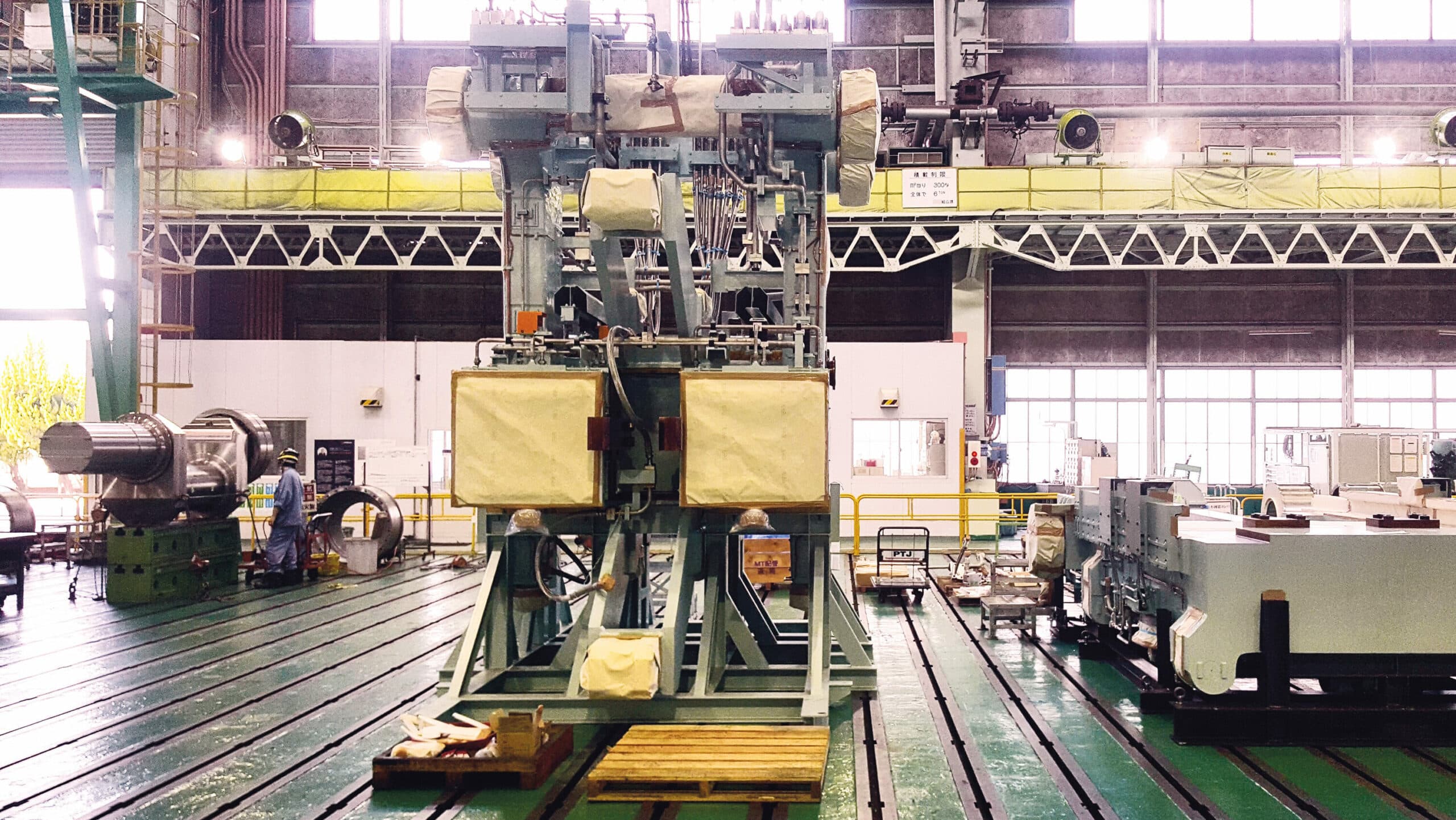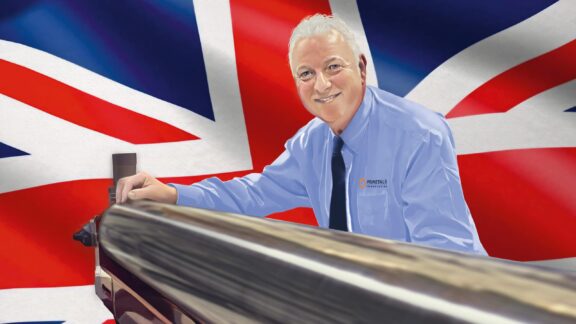This post is also available in: 简体中文 (Chinese (Simplified))
Among the numerous locations of Primetals Technologies, Hiroshima holds a special significance. This is particularly true for the site workshop, which serves as a center of manufacturing for Japan and abroad. The workshop generates products of the highest quality for all customers, and its workflows are designed to ensure a constant refinement of everything it creates. Metals Magazine editor Dr. Thomas Widter visited the place to discover what makes this workshop – and its people – so very special.
“I bet you could easily eat off this spotless floor.” – This is what we just can’t help thinking as we step into the Hiroshima workshop of Primetals Technologies for the first time. And indeed, while the facility has certainly been designed for purposes other than dining, the level of cleanliness could hardly be higher. The workshop makes the best first impression possible, and the surroundings also contribute to an overall sense of restrained splendor.
It is a beautiful summer’s day, complemented not only by a glaringly powerful sun, but also by the high humidity levels so typical for the region. When driving to the workshop, we had made our way through a large and complex area comprising not only the Hiroshima operations of Primetals Technologies, but also some of the buildings of the mother company Mitsubishi Heavy Industries. The roads are designed as wide-spaced alleys with trees on both sides. It is a beautiful look, calm and unpretentiously tasteful. Even though there is a slight feeling of “only two more weeks until the main summer vacation” in the air, the atmosphere is one of composed professionalism.
Meeting the people
There is, of course, a reason behind the high standard of tidiness and the sense of order on display in the workshop, as our guide and Senior Engineer Shuhei Aso points out to us. Actually, there are even two reasons: Firstly, the entire workshop is run in a way that ensures the highest safety standards possible for all personnel, and one factor that contributes to achieving this goal is keeping everything neatly organized and thoroughly clean. “We have not had an accident for 2,361 days,” Aso says. Not only he, but the entire team is incredibly pleased with that fact. There is even a board counting the “Days Since the Last Accident,” which at the time of our visit had accumulated over six years’ worth of operation time.
The second motivation for keeping the workshop a tightly run ship is the high standard of excellence that everybody strives for. This is not only evident in the outer manifestation of the workshop and the impression its looks create, but also the philosophy behind it. Anyone starting to work at the Hiroshima site of Primetals Technologies will learn to aspire to perfection, as Masakazu Yamamoto, manager of the Assembly Group, explains: “After one of our products gets delivered to the customer, I always make sure that everything is to their satisfaction. This kind of perfection corresponds to a value-set that I learned as a young trainee, and I feel it is important to pass these values on to my younger colleagues today, as it is the heritage of our Hiroshima workshop.” Another impressive aspect of the Hiroshima operations is the great amount of consideration its employees have for one another, especially toward their subordinates. Everyone responsible for a smaller group of workers will ensure their growth in skill and expertise over many years of personal development. Masakazu Yamamoto is passionate about ensuring the best-possible training for his staff: “Properly educating the members of my team is very important to me. I like to pair a younger person with a more experienced one, so they can learn from one another. They will also be sent to external seminars together. After these sessions, the younger worker will receive a certificate issued by the Japanese government.”
“It is vital that every single employee reaches an exceptional training level,” emphasizes Toyoharu Yoshikawa, one of the on-site team leaders. “Great technical skill and know-how, but also a good personality and character are required, so that everyone can represent our company toward our customers. I will have in-depth talks with every person I am responsible for, and will provide them with detailed feedback on how they can improve their everyday work. This way, each worker learns to perform their job in the best possible way.”
Inspecting the products
So what kinds of products are made at the Hiroshima workshop? As you might have guessed, they are quite diverse and cover almost the entire range of parts (both spare and new) that today’s steel producers require. During our visit at the site, we picked out a few products that seemed particularly interesting (see below for an overview).
One product type that could be called a “specialty” of the workshop is the housings for hot-strip mills, which are not forged but welded. They feature an outstanding price-performance ratio. Crafting these housings requires extreme precision, because the surface must be absolutely even. For this reason, the Hiroshima workforce is distinctly proud of this product category. Other products constructed at the Hiroshima workshop include sizing press crank shafts and main gear boxes for width reduction, components for the main cylinders of cold-strip mills, and inner housings for HZ mills.
But whatever the product the team at the Hiroshima workshop will be working on, it will have two common characteristics: It will have been manufactured to the highest standards, and when the time for installation comes, it will be fine-tuned by expert hands. Should it be called for, workshop manager Masakazu Yamamoto tends to send a specialist from the Hiroshima Assembly Group to the customer’s site to provide assistance. “Everything will be checked with great care, and any on-site findings will be thoroughly reported back to our group, taken into consideration and well discussed,” Yamamoto details. “Creating this kind of feedback cycle ensures a constantly ongoing refinement of our product assembly and greatly contributes to overall customer satisfaction.”
When asked about whether there is a motto that they live by, the workers will state that they adhere to a three-stage practice when encountering more complex challenges. The first step they will take is to go on-site where the issue can be directly examined. The second is to look for the facts “with honesty,” thereby leaving any presupposed notions about what might be the case behind. The third one is to then focus on the actual findings and to tackle the task at hand accordingly. This way, the best possible approach to improve the technology at work can be ensured. At the core of this method is the idea of constant refinement, with the goal of delivering products of ever-higher quality to the customer.
Products
At the time of our visit, a broad range of products had just been finished and was getting ready to be shipped to the customers’ sites. As we can only present a selection of the total portfolio, we have picked some of the more visually striking products.
The fabric of Hiroshima
When talking to the workers in Hiroshima, one gets a sense of the fabric that the place is made of. It is a place rich in history. Not only is the city known for having had to endure the devastation caused by the atomic bomb during the Second World War, but also for its fast rebuilding, despite all obstacles it faced. Hiroshima is also rich in legacy, evident in both various cultural aspects of daily life and the craftsmanship to be found, for instance, at our workshop. Knowledge is passed down from one generation to the next with a strong sense of order and intergenerational harmony.
Of course, Hiroshima is also rich by virtue of the passions of its people. Two sources of personal pride you will often hear about are family and sports. Workshop team leader Toyoharu Yoshikawa will tell you about his three boys, who propel each other to become even more proficient swimmers. “Having children may be challenging at times, but is also very fulfilling,” he says. Masakazu Yamamoto informs us about the locals’ enthusiasm about a certain kind of sport: “My personal passion is for the Carp, Hiroshima’s professional baseball team. When I raise a toast, it will often be to the future success of the Carp. I like to cheer them at the stadium when they play. This year, the Carp made it to number one in Japan’s Central League, which I am incredibly proud of.”
During our revealing and extremely hospitable stay in Hiroshima, we have come to believe that it must have been the method of never-ending refinement that propelled the skills of the city’s baseball team to the top. The players of the Carp must have trained with quiet professionalism. They must have played every single game with passion. And in doing so, they could not have made their entire home town more proud of its legacy. Staying on the site of the Hiroshima workshop, we got the feeling that the same was true for its workers, their craft, and their dedication to excellence.
At first sight, it might look like a ruin. And in a way, it is: The Genbaku Domu or “Atomic Bomb Dome,” was the only building that remained standing close to the hypocenter where the atomic bomb hit Hiroshima on August 6, 1945. What you discover once you investigate the history of the building is that the remains have been intentionally left the way they survived the Second World War, if not completely without occational controversy about a potential renovation. The building was originally designed by the Czech architect Jan Letzel as an exhibition hall and was completed in April 1915. The Dome’s main use was that of arts and educational exhibitions, which, of course, was abruptly stopped by the bombing. In December of 1996, the Dome became part of the UNESCO World Heritage List on the Convention for the Protection of the World Cultural and Natural Heritage. The inclusion was made based on the fact that the building symbolized both the first use of nuclear weapons on a human population and the lasting peace that followed. Nowadays, the Dome is part of a large memorial site, entailing a dedicated exhibition building and an extensive park. In May 2016, the site of the Peace Memorial was visited by Barack Obama. He was the first U.S. President to officially come to Hiroshima since World War Two.
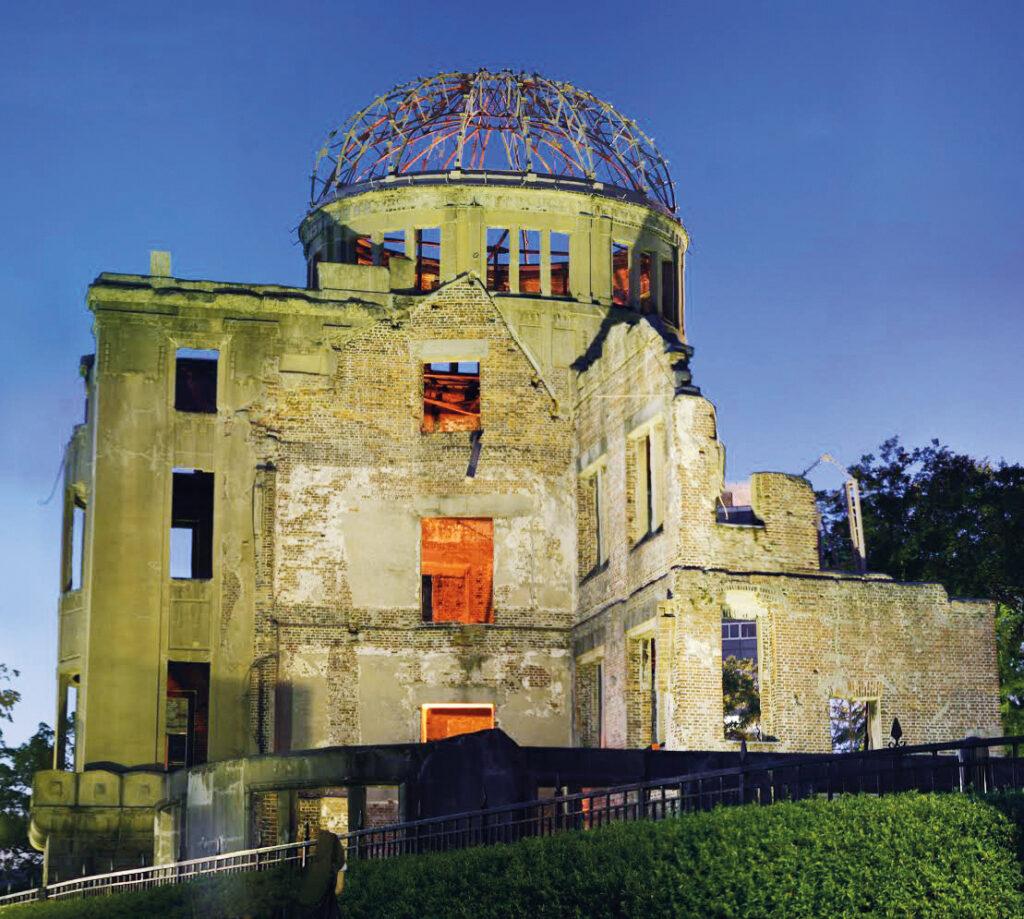
The people of Hiroshima are incredibly proud of their city’s well-known and well-respected baseball team. At the time of our visit to Hiroshima in the summer of 2016, the Carp had just made it to the Number One position within Japan’s Central League for the first time in 25 years. The Carp had reached the top position several times before, with the first victory having taken place 30 years after World War Two had ended. But there had been years when the team had to endure a string of seasons with bad luck – a fact that makes the current success all the more satisfying. The team was established in 1949, with its identification colors being red and dark blue. The name stems from both the Hiroshima Castle, which is called “Carp Castle” in Japanese, and the hefty presence of carps in the Otagawa River that flows through Hiroshima. The team’s primary owners comprise the Matsuda family with a 60% share and the carmaker Mazda with a 34% share. Between these two, a strong connection exists, as the Matsudas’ ancestor Jujiro Matsuda was the entrepreneur who founded Mazda in 1920. Underlining this historic link, the Carp’s full name to this day refers to the original name Mazda used until 1984, “Toyo Kogyo Company.” While many employees of the Primetals Technologies workshop are among the team’s most avid fans, its followers are generally spread all over Japan and innumerable. The high profile the Carp holds is richly illustrated in the ever-present merchandise one encounters when wandering through Hiroshima’s shopping malls. Also, you will see many people in the streets of Hiroshima wearing Carp T-shirts. More information on the Hiroshima Carp can be found online at www.carp.co.jp/en/

